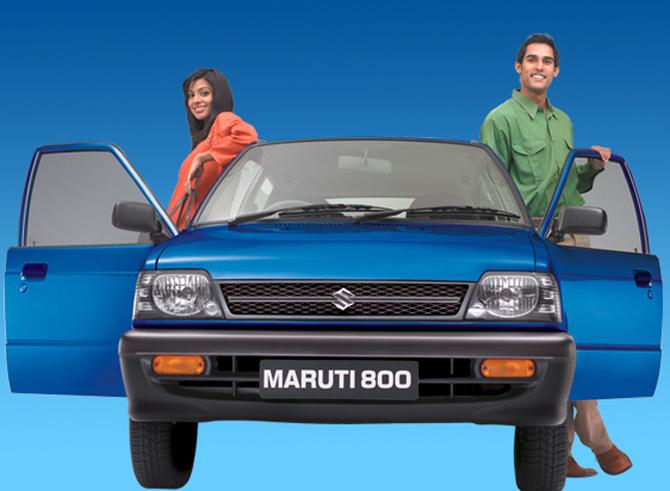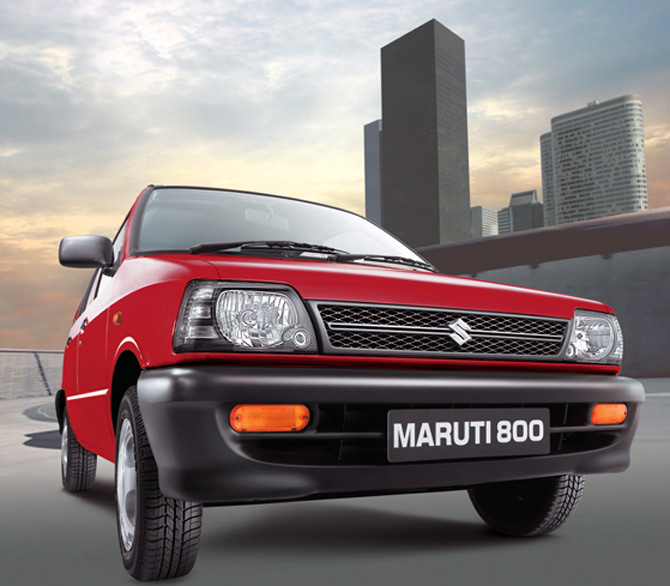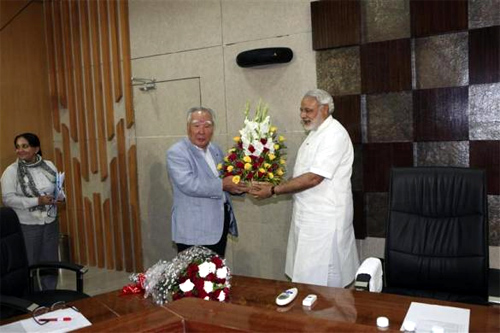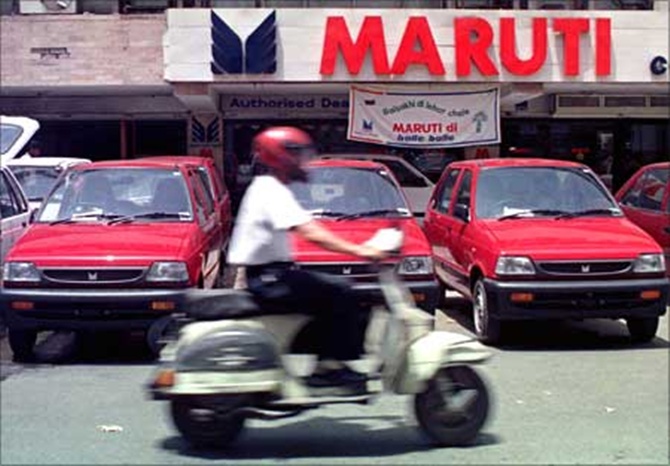Photographs: Courtesy, Maruti Bhupesh Bhandari
The Maruti 800 changed the way cars were bought, sold and serviced in India, components were made, and industrial enterprises were organised. For the first time, the customer became the focus of manufacturing, says Bhupesh Bhandari.
For me, and many others, the Maruti 800 was the culmination of a long-cherished dream.
My first car was a second-hand Premier Padmini, bought from a scheming mechanic. Driving it was traumatic, to say the least.
The car would stall without notice. Parts would fall off whenever they wanted. The engine even caught fire once. The car spent as much time with the mechanic as with me.
When I went to pick up my brand new Maruti 800, the dealer’s advice was: “Drive it yourself; otherwise, it will seem you have a driver for your scooter.”
...
Why Maruti 800 was the biggest attraction for car lovers
Photographs: Courtesy, Maruti
The message was that here was a small car I won’t be ashamed of driving. The bucket seats were comfortable. The car was zippy, provided you switched off the air-conditioner when the traffic signal turned green. (Those with Padminis and Ambassadors lamented how the Maruti driving culture had spoilt the genteel Indian traffic.)
The gears fell into place smoothly, and the wipers worked. With its small turning radius, the car negotiated mountain curves beautifully. All told, driving the Maruti 800 was a divine experience.
The car was the first brush with modern technology for most Indians. When it was introduced in 1983, the Maruti 800 wasn’t really an all-new model; it was based on the Suzuki Fronte. Because India was a closed economy, even that was a luxury.
A Maruti 800 in the garage showed that the person had arrived in life. One overseas footwear maker, when it entered India, just counted the number of Maruti 800 owners and estimated that could be the potential market for its produce.
...
Why Maruti 800 was the biggest attraction for car lovers
Photographs: Courtesy, Maruti
It turned out to be an overestimation because the company hadn’t realised that Indians took loans and saved all their lives to buy the car — so high was it on their list of priorities. A pair of snazzy sports shoes could wait.
The day after I had got my Maruti 800, a total stranger rang the doorbell early in the morning. He had driven more than 25 kilometres just to sell me a few pins. He had a metal scale, which he slid between the front-door window and the plastic lining and the lock opened with a sickening ...
Why Maruti 800 was the biggest attraction for car lovers
Photographs: Courtesy, Maruti
The hit from behind would have dented the car. A week or so at the mechanic’s workshop was guaranteed. The Maruti 800’s mudguard was plastic. Sure the mudguard was broken but there was no damage to the car. The service centre brought out a new one from the warehouse and replaced it within minutes.
All this may sound mundane now. At that time, it was nothing short of revolutionary. The Maruti 800 changed the way cars were bought, sold and serviced in India, components were made, and industrial enterprises were organised.
For the first time, the customer became the focus of manufacturing. The Maruti 800 was launched in December 1983. India at that time was a no-go area for multinational corporations. It was a socialist country.
...
Why Maruti 800 was the biggest attraction for car lovers
Photographs: Courtesy, Maruti
The licence raj was firmly in place. For a car maker, the place held zero appeal. The roads were terrible. Purchasing power was low. If there was a latent demand for modern goods, it was not easy to spot. People were content with their Padminis and Ambassadors.
Every car manufacturer worth his clutch plate had said no to the government’s proposal to make a small car in the joint sector (collaboration between the private and public sectors, akin to public-private partnerships of today).
But Osamu Suzuki took the challenge head-on. And how it worked! He was the first buyer of the India story — years before Jack Welch and Carlos Ghosn.
...
Why Maruti 800 was the biggest attraction for car lovers
Image: Suzuki Chairman and CEO Osamu Suzuki receives a bouquet from Narendra Modi (R), chief minister of Gujarat.Photographs: Reuters
Osamu Suzuki’s contribution to India’s industrial advancement is often not fully appreciated. When people thought he won’t be able to sell more than 40,000 cars in a year, he built a factory in Gurgaon that could make 100,000 cars.
Till then, economy of large-scale production was just a textbook concept for Indians. He brought the Japanese culture of quality and efficiency to India. Maruti Udyog (as Maruti Suzuki was called then) bought stakes in its key suppliers. More and more parts were sourced locally.
Vendors who met him at the Suzuki headquarters at Hamamatsu in Japan were pleasantly surprised to find that he knew every supplier and dealer across the world by his name.
This was not something they were used to in India: big businessmen were distant and unapproachable, though all-knowing. If car makers have come to India to make small cars, a large part of the credit goes to Osamu Suzuki.
...
Why Maruti 800 was the biggest attraction for car lovers
Photographs: Reuters
It was only after the Maruti 800’s success that the Japanese motorcycle giants entered India: Honda with the Munjals, Yamaha with the Nanda family of Escorts, and Suzuki with TVS. But there was a difference.
The motorcycle ventures were partnerships between private companies. Maruti Udyog was a partnership between the government and a private company: one a symbol of free markets and the other of a decaying socialist state. Such a venture was never going to be easy to run.
Still, Osamu Suzuki persisted. What helped was that the first two leaders of the company were men from the government: V Krishnamurthy and R C Bhargava. They brought their knowledge of how the government worked to the car maker. Eventually, the government exited the venture.









article